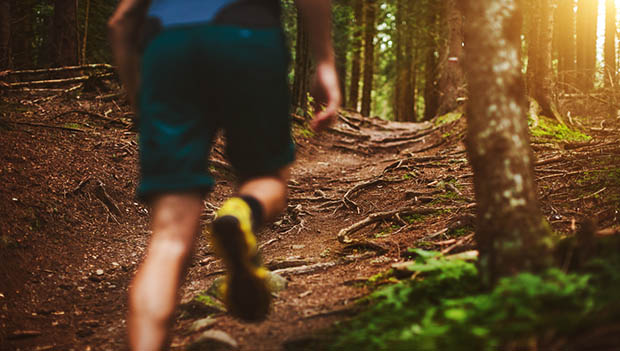
For many runners, hitting the trails is the ultimate escape. It's a way to disconnect and remove yourself from the hustle and bustle of everyday life while enjoying some physical activity in nature.
But what are some hallmarks of a good trail for running? Is it the location? Natural features? Toughness?
No matter what your draw is to trail running, one thing always remains the same: It's always better unspoiled. There's nothing worse than when sweeping panoramic views and fresh air are mixed with trash, debris and damaged ecosystems.
It's important to remember, as a trail runner running several miles at a time, you have the potential to do some serious harm while exploring your favorite natural areas.
To help combat this preventable damage, the Leave No Trace Center for Outdoor Ethics has created seven principles that have been widely adopted by outdoor enthusiasts and trail runners across the globe. We'll address each of its seven points, and how you as a trail runner can apply these guidelines when out running.
Plan Ahead and Prepare
As with any sport, planning head and well-thought-out preparation is key when trail running. Think about how much food and water you'll need (do you need a vest, handheld bottle, etc.?), what the weather forecast looks like (what kind of gear do you need, cold, warm or wet?) and what flora and fauna you need to concern yourself with. Also, don't forget to share your plan with family and friends. In case you find yourself in trouble, they'll know where to look.
Travel and Camp on Durable Surfaces
While you may think taking a shortcut or forging your own trail is okay, imagine if everyone who used the trail thought the same thing. When trail running, make sure you're always on established trails (no off-the-trail detours for Instagram pictures), and don't try to cut switchbacks to save time. This can damage soil structure and cause unnecessary erosion that will likely impact the main trail, too.
Dispose of Waste Properly
This one takes a little extra effort on your part. There's absolutely no reason to ever leave your gel or bar wrappers on the trail. If you pack it in, it's your responsibility to pack it out (this goes for human waste in some areas, too). If you're running through an area that allows you to go No. 2, dig a hole at least six to eight inches deep and conduct your business accordingly. Afterward, bury your toilet paper along with your waste with the soil you excavated.
Bonus Karma Points: If you come across someone else's trash on the trail, pack it out.
Leave What You Find
If everyone took a rock or wildflower home after running on a trail, there'd be a serious ecological impact over time. The best way to enjoy something is to appreciate it in its natural setting, and you can "keep" something by taking its picture. Remember, don't go off trail to capture a photo (use the zoom on your phone or a lens)—every step off trail can damage sensitive soil formations, new seedlings and microbial colonies.
Minimize Campfire Impacts
Most trail runners don't build campfires, so they won't have to worry about this point. But if you're a multi-day trail runner or you're doing an ultra-style event, there are a couple things to keep in mind. First, know if building a campfire is allowed in the first place. Some areas with a high fire danger restrict campfires during certain times of the year. If you decide to build a campfire, use existing fire rings or build in the same place someone else has previously. Also, don't allow your fire to burn to ash, and put it out with water, not dirt (and never leave your fire unattended).
Respect Wildlife
No matter how cute Bambi or Thumper might look, remember they're wild animals. Give them space and only observe them—never feed them or attempt to make contact. Animals who get too familiar with humans can become aggressive and begin destroying property looking for human food. Also, if you run with your dog, always make sure they're on a leash. This protects the wildlife and your dog, too.
Be Considerate of Other Visitors
This one is simple—don't be a jerk while out running on your favorite trails. Trails are often shared with mountain bikers, hikers, and other visitors, so not everyone will be going the same pace as you or may take up more of the trail. Remember, downhill runners yield to uphill runners, and all users yield to horseback riders. Noise pollution is another issue—if you have to listen to music to get in the zone, use headphones not Bluetooth speakers.
Did we miss anything? Leave your "Leave No Trace" tips for trail runners in the comments.
READ THIS NEXT: 5 Reasons to Try Trail Running


